
Sir Fred Hoyle (24 June 1915 – 20 August 2001) was an English astronomer who formulated the theory of stellar nucleosynthesis and was one of the authors of the influential B2FH paper. He also held controversial stances on other scientific matters—in particular his rejection of the "Big Bang" theory (a term coined by him on BBC Radio) in favor of the "steady-state model", and his promotion of panspermia as the origin of life on Earth. He spent most of his working life at St John's College, Cambridge and served as the founding director of the Institute of Theoretical Astronomy at Cambridge.

Panspermia is the hypothesis that life exists throughout the Universe, distributed by space dust, meteoroids, asteroids, comets, and planetoids, as well as by spacecraft carrying unintended contamination by microorganisms, known as directed panspermia. The theory argues that life did not originate on Earth, but instead evolved somewhere else and seeded life as we know it.
Timeline of knowledge about the interstellar medium and intergalactic medium:

Astrochemistry is the study of the abundance and reactions of molecules in the universe, and their interaction with radiation. The discipline is an overlap of astronomy and chemistry. The word "astrochemistry" may be applied to both the Solar System and the interstellar medium. The study of the abundance of elements and isotope ratios in Solar System objects, such as meteorites, is also called cosmochemistry, while the study of interstellar atoms and molecules and their interaction with radiation is sometimes called molecular astrophysics. The formation, atomic and chemical composition, evolution and fate of molecular gas clouds is of special interest, because it is from these clouds that solar systems form.
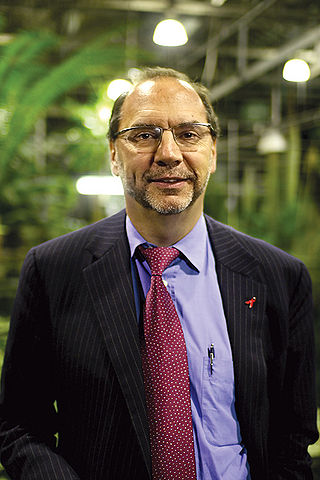
Sir Peter Karel, Baron Piot, is a Belgian-British microbiologist known for his research into Ebola and AIDS.
Serology is the scientific study of serum and other body fluids. In practice, the term usually refers to the diagnostic identification of antibodies in the serum. Such antibodies are typically formed in response to an infection, against other foreign proteins, or to one's own proteins. In either case, the procedure is simple.
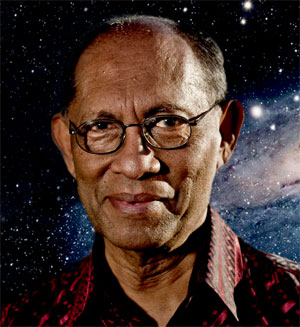
Nalin Chandra Wickramasinghe is a Sri Lankan-born British mathematician, astronomer and astrobiologist of Sinhalese ethnicity. His research interests include the interstellar medium, infrared astronomy, light scattering theory, applications of solid-state physics to astronomy, the early Solar System, comets, astrochemistry, the origin of life and astrobiology. A student and collaborator of Fred Hoyle, the pair worked jointly for over 40 years as influential proponents of panspermia. In 1974 they proposed the hypothesis that some dust in interstellar space was largely organic, later proven to be correct.

Global health is the health of populations in a worldwide context; it has been defined as "the area of study, research, and practice that places a priority on improving health and achieving equity in health for all people worldwide". Problems that transcend national borders or have a global political and economic impact are often emphasized. Thus, global health is about worldwide health improvement, reduction of disparities, and protection against global threats that disregard national borders, including the most common causes of human death and years of life lost from a global perspective.
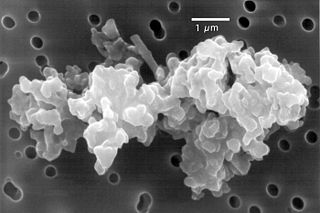
Cosmic dust – also called extraterrestrial dust, space dust, or star dust – is dust that occurs in outer space or has fallen onto Earth. Most cosmic dust particles measure between a few molecules and 0.1 mm (100 μm), such as micrometeoroids and meteoroids. Cosmic dust can be further distinguished by its astronomical location: intergalactic dust, interstellar dust, interplanetary dust, and circumplanetary dust. There are several methods to obtain space dust measurement.
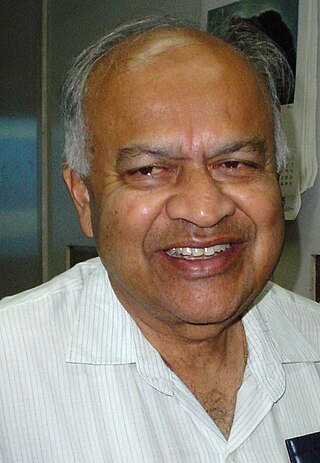
Jayant Vishnu Narlikar is an Indian astrophysicist and emeritus professor at the Inter-University Centre for Astronomy and Astrophysics (IUCAA). He developed with Sir Fred Hoyle the conformal gravity theory, known as Hoyle–Narlikar theory. It synthesises Albert Einstein's theory of relativity and Mach's principle. It proposes that the inertial mass of a particle is a function of the masses of all other particles, multiplied by a coupling constant, which is a function of cosmic epoch.
The interplanetary dust cloud, or zodiacal cloud, consists of cosmic dust that pervades the space between planets within planetary systems, such as the Solar System. This system of particles has been studied for many years in order to understand its nature, origin, and relationship to larger bodies. There are several methods to obtain space dust measurement.
Dukes' disease, named after Clement Dukes, also known as fourth disease or Filatov-Dukes' disease, is an exanthem. It is distinguished from measles or forms of rubella, though it was considered as a form of viral rash. Although Dukes identified it as a separate entity, it is thought not to be different from scarlet fever caused by exotoxin-producing Streptococcus pyogenes after Keith Powell proposed equating it with the condition currently known as staphylococcal scalded skin syndrome in 1979.
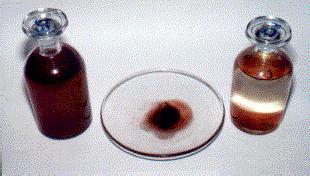
The Kerala red rain phenomenon was a blood rain event that occurred in Wayanad district of southern Indian state Kerala on Monday, 15 July 1957 and the colour subsequently turned yellow and also 25 July to 23 September 2001, when heavy downpours of red-coloured rain fell sporadically in Kerala, staining clothes pink. Yellow, green and black rain was also reported. Coloured rain was also reported in Kerala in 1896 and several times since, most recently in June 2012, and from 15 November 2012 to 27 December 2012 in eastern and north-central provinces of Sri Lanka.
The Global Burden of Disease Study (GBD) is a comprehensive regional and global research program of disease burden that assesses mortality and disability from major diseases, injuries, and risk factors. GBD is a collaboration of over 3600 researchers from 145 countries. Under principal investigator Christopher J.L. Murray, GBD is based in the Institute for Health Metrics and Evaluation (IHME) at the University of Washington and funded by the Bill and Melinda Gates Foundation.

Vera Rich was a British poet, journalist, historian, and translator from Belarusian and Ukrainian.
Directed panspermia is the deliberate transport of microorganisms into space to be used as introduced species on other astronomical objects.
Pseudo-panspermia is a well-supported hypothesis for a stage in the origin of life. The theory first asserts that many of the small organic molecules used for life originated in space. It continues that these organic molecules were distributed to planetary surfaces, where life then emerged on Earth and perhaps on other planets. Pseudo-panspermia differs from the fringe theory of panspermia, which asserts that life arrived on Earth from distant planets.
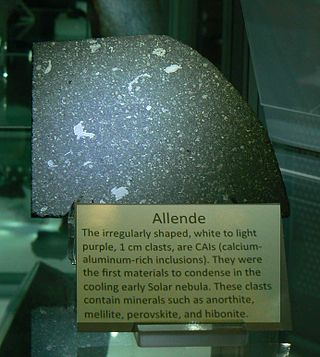
Hemolithin is a proposed protein containing iron and lithium, of extraterrestrial origin, according to an unpublished preprint. The result has not been published in any peer-reviewed scientific journal. The protein was purportedly found inside two CV3 meteorites, Allende and Acfer-086, by a team of scientists led by Harvard University biochemist Julie McGeoch. The report of the discovery was met with some skepticism and suggestions that the researchers had extrapolated too far from incomplete data.
Vaccine resistance is the evolutionary adaptation of pathogens to infect and spread through vaccinated individuals, analogous to antimicrobial resistance. It concerns both human and animal vaccines. Although the emergence of a number of vaccine resistant pathogens has been well documented, this phenomenon is nevertheless much more rare and less of a concern than antimicrobial resistance.

Hemoglycin is a space polymer that is the first polymer of amino acids found in meteorites.











